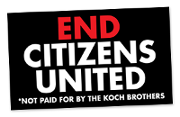Biblio
Filters: First Letter Of Last Name is P [Clear All Filters]
(1993). Technopoly: The Surrender of Culture to Technology.
"In the work of Frederick Taylor we have, I believe, the first clear statement that society is best served when human beings are placed at the disposal of their techniques and technology, that human beings are, in a sense, worth less than their machinery." (p. 52)
(1993). Leadership jazz.
"Vulnerability is the opposite of self-expression. Vulnerable leaders trust in the abilities of other people; vulnerable leaders allow the people who follow them to do their best. An invulnerable leader can be only as good as her own performance—what a terrifying thought! One caveat: Remember that there is no such thing as safe vulnerability." (p. 220)
(1994). Built to Last: Successful Habits of Visionary Companies.
"When we began our research project, we speculated that our evidence would show the visionary companies to be great places to work (or at least better places to work than the comparison companies). However, we didn't find this to be the case—at least not for everyone." (p. 121)
(1994). Competing for the Future.
"There beats in every person the heart of an explorer. The joy of discovery may be found in the pages of a new cookbook, in a brochure of exotic vacations, in an architect's plans for a custom-built home, in the trek to a remote trout stream, in the first run down a virgin-powdered ski slope, by the opportunity to explore the unfamiliar. Thus, it's not surprising that when a company's mission is largely undifferentiated from that of its competitors, employees may be less than inspired." (p. 132)
(1994). The pursuit of wow!: every person's guide to topsy-turvy times.
"Have you noticed?
Most good (neat, innovative, wild, woolly) 'stuff', large and small, happens in the boondocks, far, far, from corporate headquarters, corporate politics, and corporate toadying....
So how healthy is your fringe? How loony are its inhabitants?" (p. 301)
Most good (neat, innovative, wild, woolly) 'stuff', large and small, happens in the boondocks, far, far, from corporate headquarters, corporate politics, and corporate toadying....
So how healthy is your fringe? How loony are its inhabitants?" (p. 301)
(1994). To Engineer is Human: The role of failure in successful design.
"There is a familiar image of the writer starting at a blank sheet of paper in his typewriter beside a wastebasket overflowing with crumpled false starts at his story. This image is true figuratively if not literally, and it represents the frustrations of the creative process in engineering as well as in art." (p. 75)
(1994). UNIX UNLEASHED W/CD/ROM.
(1995). Demons.
(1995). Mind Over Mood: Change How You Feel by Changing the Way You Think.
"Anger is linked to a perception of damage or hurt and to a belief that important rules have been violated. We become angry if we think we have been treated unfairly, hurt unnecessarily, or prevented from obtaining something we expected to achieve. Notice the emphasis on fairness, reasonableness, and expectation." (p. 193)
(1995). Stop Paddling & Start Rocking the Boat: Business Lessons from the School of Hard Knocks.
"Visionaries have to come to work willing to be fired. That's the price you must pay. You've got to be willing to take chances, to speak up, to rattle cages, to challenge the basic premises, to suggest a better way of doing things." p. 222
(1995). 7 Secrets for Successful Living: Tapping the Wisdom of Ralph Waldo Emerson to Achieve Love, Happiness, and Self-Reliance.
"Conforming to a way of life you do not believe in diminishes your power, for you are working against yourself. Although you may accomplish much in the way of outward success, in your core fear and weakness reign. Why do you think many people feel disillusioned when they finally achieve success? Those who do usually say 'something is missing,' and that something is usually their real selves." (p. 22)
(1996). Java With Borland C++.
(1996). Red Hat Linux Unleashed.
(1996). Surviving Your Boss: How to Cope With Office Politics and Get on With Your Job.
"In any situation of change, conflict, or misunderstanding there is anger. Anger frequently masks fear. Fear in situations of conflict and change is very predictable. And with anger there is usually blame, for oneself and for others. Anger is one of the most destructive forces in the workplace today. It is ultimately a fatal emotion. Studies show that about 20 percent of us have hostility levels high enough to be dangerous—to our own health and to those around us. Hostility level is associated with increased smoking, drinking, eating, and weight gain. Hostility has long been a well-established contributor to coronary risk and heart disease, as well as myriad other illnesses.
It's likely you have experienced the relationship between anger, depression, resentment, and low self-esteem. You know about the aches and pains that come from tension. The fatigue and lack of joy that ensue as days are increasingly filled with the burden of frustration and suppressed rage." (p. 96)
It's likely you have experienced the relationship between anger, depression, resentment, and low self-esteem. You know about the aches and pains that come from tension. The fatigue and lack of joy that ensue as days are increasingly filled with the burden of frustration and suppressed rage." (p. 96)
(1996). Leader as coach: strategies for coaching and developing others.
"Unlike soft clay that can be pressed into infinite shapes, people evolve from a stable core. They can change in degree and bend in new directions, but they are unlikely to change in dramatic ways, at least not quickly. Respect their judgement about their own limits. Carefully evaluate how much change and what kind of change is fair to expect, especially if you are aware of changes or problems in other parts of their life or if they begin to appear distressed and confused." (p. 48)
(1997). The circle of innovation : you can't shrink your way to greatness.
"...wealth is not gained by perfecting the known, but by imperfectly seizing the unknown." (p. 30)
(1998). Critical SHIFT: The Future of Quality in Organizational Performance.
"Sometimes the search for a position in your organization that matches your desires leaves you empty-handed. In this situation you must make the decision to leave the organization or stay and create a new position if you believe it will add value. If you decide to stay, do not be deterred by those who tell you it will be impossible to create a new role. Our parents taught us 'Where there's a will, there's a way.' "
(C)2014 CC-BY-NC 3.0, workcreatively.org











 ]
]